hat there will be 30 billion IoT devices and huge market value with an increase in $7.1 trillion by the end of 2022. IoT-devices have major application indoor locking system, cameras, and smart car connect. Its main function is to secure and monitor the data (image, audio, and video) as per the instructions provided. By making this IOT starter kits as a part of your life, you can make your long way much smarter. I just thought of sharing these wonderful IOT starter kits that will help you to perform the task in a short time with less effort. Here is the list of Best 5 IOT Starter Kits with their amazing features. Check them in detail!
Top IOT Starter Kits List
Best IOT Starter Kits Reviews
1. DAOKI ESP8266 Weather Station IoT Starter Kit
Arduino starter kit Raspberry pi starter kits IOT starter kits
DAOKI is a reliable brand whose kit has all the essential components that help you to make a proper weather station kit. It uses the ESP8266-12E development board for obtaining weather-related insights from the internet that include forecast information, date and time of the city, and weather data for the coming 3 days. It reads the data using the sensor every 5 seconds and uploads the information every 60 seconds. Its DHT11 temperature and humidity sensor measure a humidity range of 20 – 90% RH with an accuracy of +/-5% RH, and a temperature range of 0 – 50° C with +/-2° C. They have a compact, ultra-power, and high-precision sensors that ensure absolute accuracy. It comes with a 0.96-inch digital OLED display supporting 12C, wide viewing angle which provides clear readings that can read even in less bright conditions. It is equipped with a simple communication protocol which reduces the programming impact greatly. This ESP8266 and wireless IoT development (802.11 b/g/n protocol) will allow you to have 4 home projects that include a plane spotter, weather station, climate node, and world clock. It has a USB connectivity technology and 802.11b wireless type. Below is a list of components present in the kit
Breadboard 40-pin Dupont cable DHT11 temperature and humidity sensor Esp8266-12E development board 96-inch OLED display USB cable Jumper wire
Pros:
Good quality components The display is wide, clear, and bright High-precision Accurate sensors
Cons:
Not for beginners No clear instructions were available.
2. ThingPulse ESP8266 WiFi IoT Starter Kit
Next on our list is ThingPulse’s ESP8266 IoT starter kit. ThingPulse is known for making affordable educational kits that help you get started with the basics of electronics and IoT. Although this is a basic kit, it allows you to develop 4 different home projects. You can choose from the climate node, plane spotter, weather station, and world clock. The kit is compatible with Arduino and ESP8266 microcontroller PCB. The kit comes with advanced features including OLED display, wi-fi chip, temperature and humidity sensors, and a USB cable. Each DIY project comes with a detailed instruction manual containing 60 pages. The instructions are written step by step and you won’t have any difficulties in following the instructions and building the project of your choice. The brand offers reliable customer support. If you have any difficulties while developing the project or have to troubleshoot, you can reach out to the brand and they will offer you super-fast customer service. The DIY kit contains the following components,
ESP8266 microcontroller GPIO pins, 1 ADC, 3V3, GND OLED Display DHT11 Sensor 3 pin break-out board Female to Female Jumper USB Cable 60-Page Comprehensive Manual (PDF)
Pros
Easy to install and assemble Detailed user manual Can build 4 different projects
Cons
Difficult to write the code Display screen is small
3. Osoyoo NodeMCU IoT Starter kit
Osoyoo’s IoT starter kit uses a microcontroller board based on ESP8266 that is powerful enough to control complex projects. The kit is ideal for learning the basics of IoT and creating simple playful projects. One of the best things about this IoT kit is that it uses the standard IoT protocol MQTT. The protocol uses many open source coding resources that are easily available and free of cost. As a beginner, this is the best way to get started with the IoT projects. Once you get well-versed with the codes, you can build complex projects such as smart homes. To help you get started with developing the kit, a DVD is included in the kit that provides detailed instructions. There are 17 sample lessons containing step by step tutorials, circuit representations, videos, and fully-tested sample codes to help you develop the project within no time. The kit is covered in a plastic box. With more than 22 different types of electronic components, you will be quickly able to start building complex projects. This kit not only helps you build automation projects and experiments, but also helps you develop the necessary knowledge in the IoT field. Below is the complete list of components included in the kit,
NodeMCU microcontroller Micro USB cable LCD Display Servo Motor Temperature & Humidity Sensor Tilt Sensor Stepper Motor Potentiometer Photoresistor (Light Sensor) Infrared Receiver Infrared Remote Controller 24x LED Push Buttons 4AA Battery Holder Resistors Jumper Wires Plastic Box Instructional DVD
Pros
Simple and educational IoT kit Detailed instructional DVD Wide range of electronic components Open source program codes
Cons
Difficult to use this kit with Mac OS Some trouble in connecting Wi-Fi
4. Arduino Opla IoT Starter Kit
Next on our list is Arduino’s Opla IoT starter kit. Whether you are a beginner or an expert in using electronic components, this kit will serve your purposes. The other main advantage of this kit is that you do not have to solder the electronic components to assemble this kit. If you are a beginner, you can get started with some simple DIY projects. On the other hand, if you are proficient in developing circuits, you can customize the processes using their data and electronic components and develop complex projects. Similar to Osoyoo’s IoT kit, this also uses open-source programming resources. So, you can easily have to source codes with free of cost and customize them according to your needs. On top of this, you also get free 12 months access to the premium subscription service Arduino Create Maker Plan. Some of the main features of this service are unlimited compilation time, retaining the date for 15 days, support for third party boards, and other features. You can access and customize the code online from wherever you are. The kit comes with the standard features including on-board sensors, OLED display, capacitive touch buttons, and an SD card holder. The kit allows you to build 8 different projects such as thermostat, automatically watering your plants, and controlling the lights remotely. The kit comes with a USB cable to connect it to your PC to power the device. Alternatively, you can use lithium-ion batteries to power the unit. The kit includes all the essential components to build the projects. Below is the complete list,
MKR microcontroller board MKR IoT Carrier OLED color display Temperature, humidity, pressure, and light sensors PIR, IMU, and moisture sensors Capacitive touch buttons SD card holder User manual
Pros
Does not have to solder Ideal for beginners and advanced users 12 months free access to Arduino Create Maker Plan
Cons
Expensive Lack of technical support
5. Particle Argon IoT Starter Kit
Particle is an edge to cloud IoT platform that provides powerful hardware solutions and efficient connectivity technologies along with software to manage your IoT deployment. This starter kit is developed to teach you the basics of Particle and hardware and software and how to build IoT projects using them. The kit uses a Particle Argon WiFi development board to connect Argon to your home network and monitor your home conditions with the help of sensors. The kit contains 8 Grove modules with each module having its own informational or sensory ability. There is also a 4 digit display screen that provides intuitive information. One of the best features of this kit is that you don’t have to solder or get any separate equipment to develop the IoT project. All you have to do is fix the Grove adapter to the Particle Argon and connect it to the module using the wires. Once you have completed making the connections, you will have to use Particle software tools such as Web IDE and Console to develop codes for the project. The kit helps you to write codes for monitoring real time sensor measurements and to send firmware codes to Argon over-the-air. You will also learn to write a few lines of codes for introducing new features to the existing project and customizing it based on your requirements. Particle Argon’s starter kit includes all the necessary components required for developing basic IoT projects.
Particle Argon module Grove FeatherWing adapter Temperature and humidity sensor Light sensor Ultrasonic range finder Rotary encoder Grove wires Button RGB LED Buzzer 4-Digit display
Pros
Easy DIY IoT kit Wide range of commonly used components Helps you learn and write codes for customizations
Cons
A bit on the expensive end
Comment * Name * Email * Website
Δ



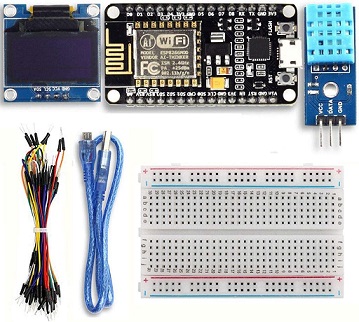
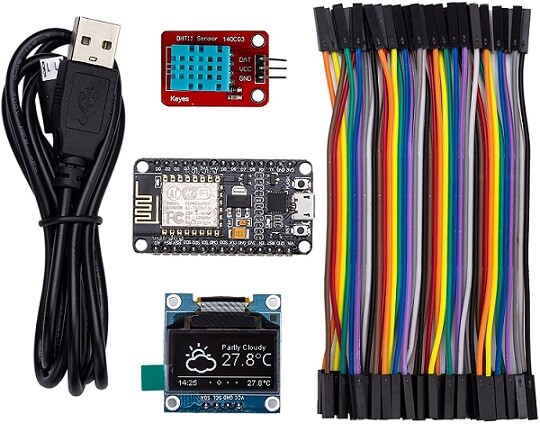
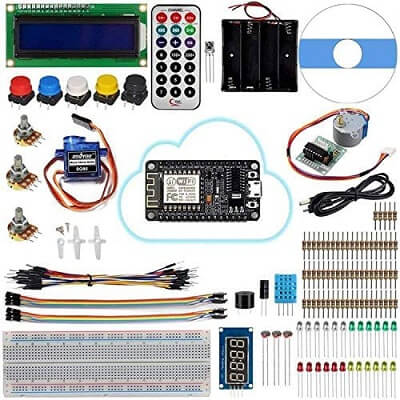
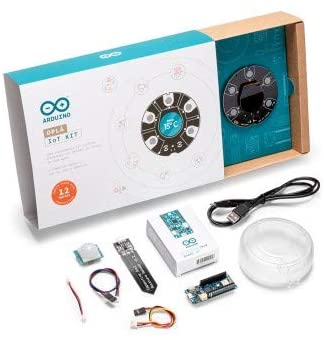
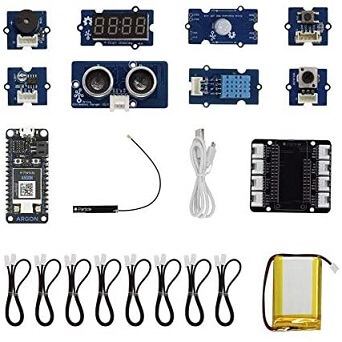


![]()